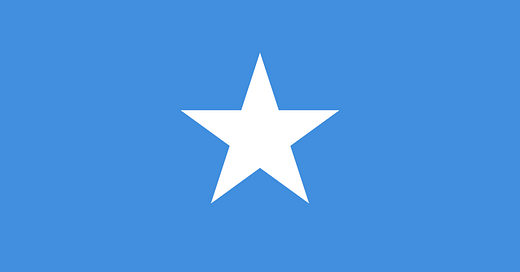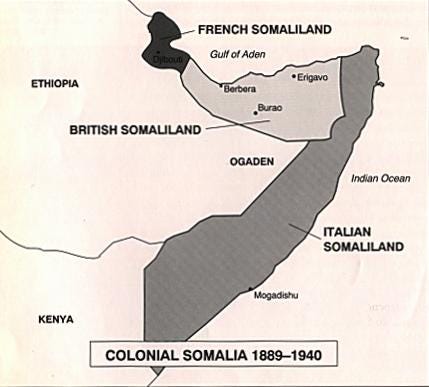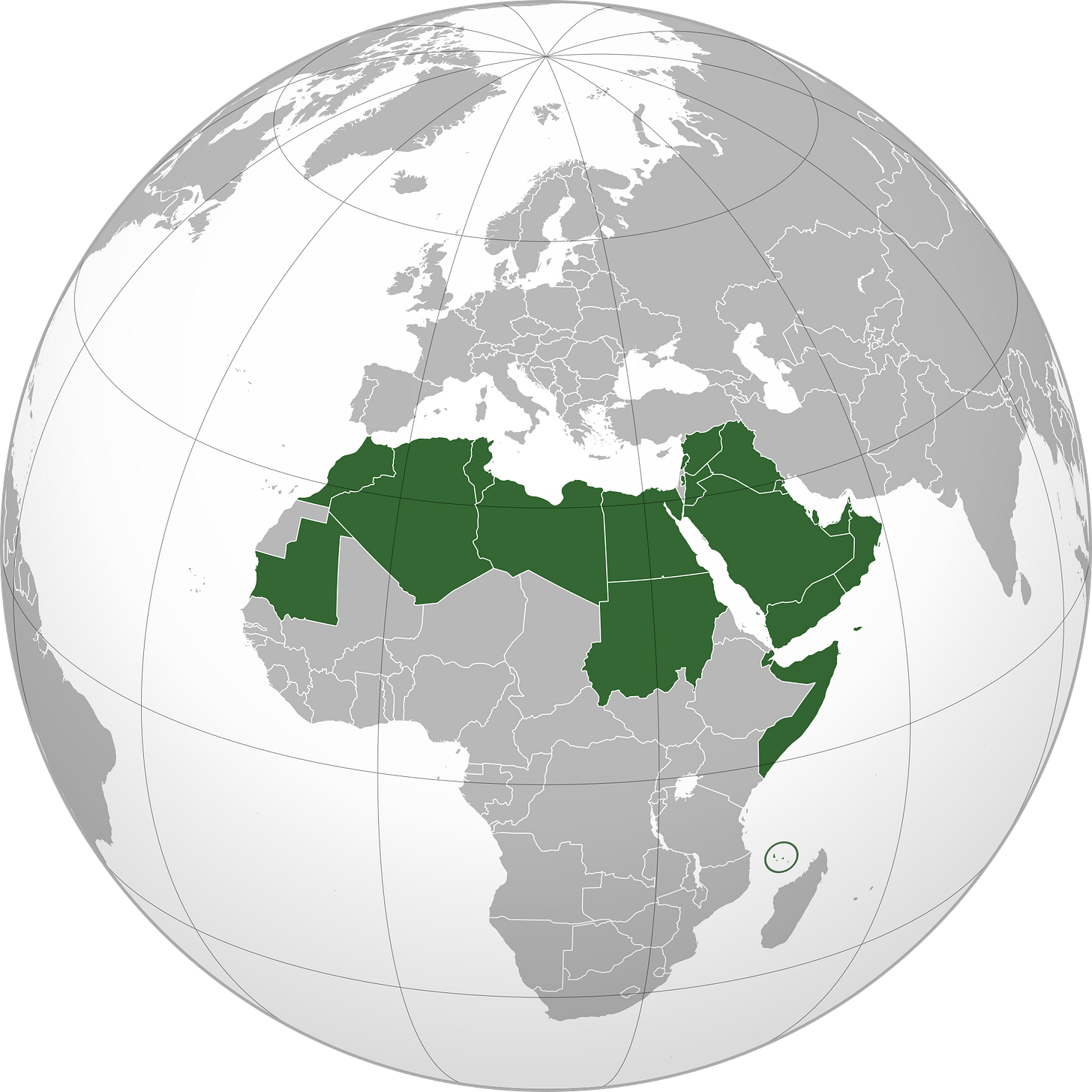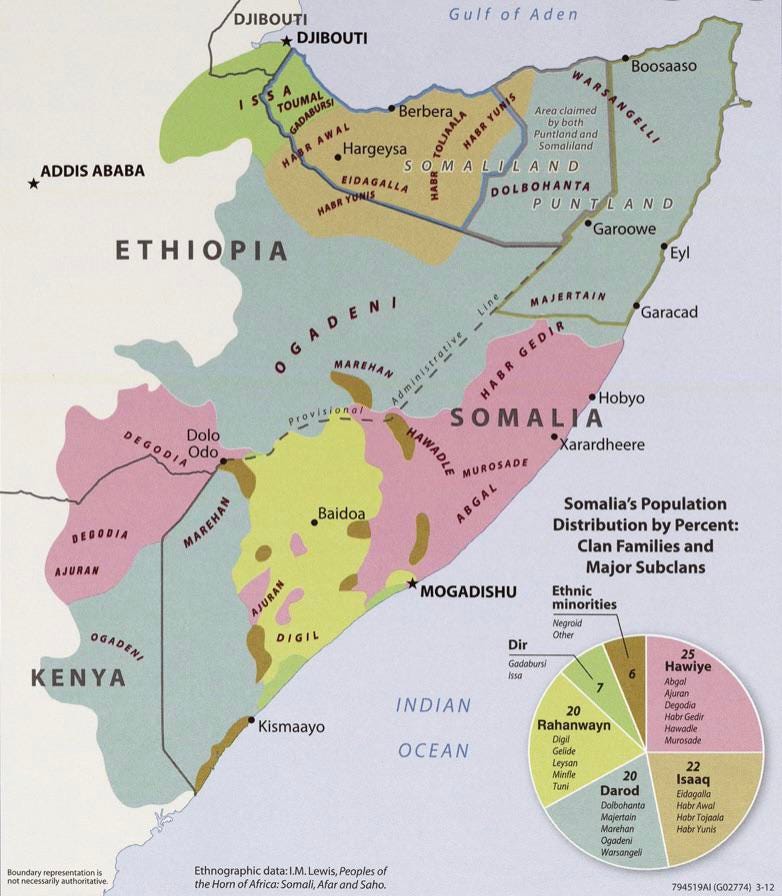Introduction
From this point onwards, I have decided to start a series of posts covering certain countries that rank high on the Fragile States Index (FSI). These countries (often described as “failed states”) are characterised by a low per capita GDP, a low Human Development Index (HDI) and, most importantly, high levels of political instability.
With that said, let’s take a look at the most glaring example of a failed state: Somalia.
P.S. Read on for an important announcement after the conclusion section!
Independence and early government (1960-1969)
After World War 2, both the UK and Italy ruled over certain parts of Somalia. British and Italian Somaliland were granted independence in 1960, when both of these parts united to form the Somali Republic on 1 July.
Abdirashid Ali Shermarke became the first Prime Minister of the newly independent Somalia. Under his rule, Somalia was heading towards becoming a stable democratic government. Following a popular referendum, the constitution of Somalia was ratified in 1961. Six years later, Muhammad Haji Ibrahim Egal was appointed by Shermarke to become the Prime Minister. Shermarke would become the President.
On 15 October 1969, Shermarke was assassinated by a policeman on a visit to the town of Las Anod. Six days later on 21 October, the Somali Army took control of the nation in a military coup d'état. Subsequently, Major General Mohamed Siad Barre took control of the nation. This is where everything starts going wrong for Somalia.
Barre’s rule (1969-1991)
Barre established the Supreme Revolutionary Council (SRC) with himself at its head. Within no time, the SRC dissolved the parliament and Supreme Court while also suspending the constitution. They also renamed the country to the Somali Democratic Republic (quite ironic).
Initially, Barre implemented policies that benefited the Somali people. He launched literacy programs and joined the Arab League (AL) in 1974. This was significant as Somalia has always had considerable cultural and religious links with the Arab world. Somalia joining the AL opened the country up to these Arab states and encouraged cooperation.
However, things started to take a turn for the worse after this. In July 1976, Barre dissolved the SRC and established the Somali Revolutionary Socialist Party (SRSP). The SRSP ruled Somalia as a one-party communist Islamic state.
In July 1977, Barre undertook an unprecedented operation. He invaded Ogaden, an ethnically Somali region of neighbouring Ethiopia, starting the Ogaden War. Initially, Somalia secured great victories. By September, it controlled 90% of Ogaden. However, Somalia incurred huge losses after this point. Cuba sent 20,000 soldiers to Ethiopia and the Soviet Union sent thousands of military experts to fight the Somalis. This move was surprising, as Somalia thought their communist brothers (Cuba and the Soviet Union) would support them. The reasons for this are complicated and largely unknown, with the most widely accepted one being that the Soviets saw Ethiopia as a more genuine communist nation. Weary from the Vietnam War, the USA did not want to support another war they were likely to lose. This led to Somali forces being pushed out of Ogaden by March 1978: a decisive Ethiopian victory.
From 1987 to 1989, Barre carried out one of the biggest genocides in the history of Africa. The Isaaq genocide involved the killing of 50,000 to 200,000 members of the Isaaq clan. Hargeisa and Burao (Somalia’s second and third biggest cities at the time) were destroyed during the genocide. 500,000 Somalis fled to Ethiopia, which led to the formation of the largest refugee camp at the time! About 400,000 Somalis were also internally displaced.
Naturally, Barre’s government was widely unpopular amongst the people of Somalia. Several rebellions broke out in Somalia during the 1980s. In 1991, tensions came to a boiling point. Barre was ousted from government, ending his cruel military dictatorship. But, a power vacuum was now left in Somalia. You can probably predict where this is going…
The Somali Civil War had begun.
Somali Civil War (1991-2000)
After the removal of Barre’s government, two militant groups emerged as eminent successors: the United Somali Congress (USC) and the Somali National Movement (SNM). These groups were not able to come to a resolution about who should rule Somalia next.
Consequently, in 1991, the SNM unilaterally declared the independence of a new Republic of Somaliland spanning across the old colony of British Somaliland. Abdirahman Ahmed Ali Tuur was elected as Somaliland’s first President.
The transfer of power in the rest of Somalia was not as easy though. USC Generals Mohamed Farah Aidid and Ali Mahdi Mohamed fought each other to exert their control over the capital of Mogadishu. The forces of these generals often fought each other in Mogadishu, making violence an everyday occurrence in the capital. A ceasefire was agreed upon in 1992, where the city was split between the two Generals.
The civil war had led to a complete deterioration in the quality of life in Somalia. Starvation was commonplace. Most citizens had to live without power. The UN decided that they needed to intervene and ensure the safety of innocent Somali residents.
The United Nations Security Council Resolution 794 was passed on December 3, 1992. A US-led Unified Task Force (UNITAF) would be created. The job of this UNITAF was to ensure stability in Somalia until humanitarian aid could be effectively provided in the country. Landing in 1993, the UNITAF initiated the United Nations Operation in Somalia II (UNOSOM II).
UNOSOM II was successful in many ways. UNOSOM forces held several conferences to establish harmony between the different Somali clans (e.g. the Mudug peace conference and Hirab reconciliation). They were also successful in reuniting Mogadishu.
Naturally, some clans and military groups in Somalia saw UNOSOM as a threat to Somalia’s sovereignty. Thus, several clashes took place between local and UNOSOM forces. The most fatal one was the Battle of Mogadishu (1993), which took place between UNOSOM forces and the forces of General Aidid. This single battle resulted in 19 UNOSOM deaths and 200 to 700 Somali deaths. In total, over 130 UNOSOM soldiers lost their lives in Somalia. Due to this enormous death count, UNOSOM forces withdrew from the country on March 3, 1995.
Following the end of UNOSOM, the country was relatively peaceful. Still, Aidid and Mohamed didn’t agree on who should be the next President. This led to Mogadishu being divided yet again. In northern Mogadishu, Mohamed was elected as the chairman of the USC/SSA (United Somali Congress/Somali Salvation Alliance). In southern Mogadishu, Aidid’s forces fought with those of businessman Osman Atto for control. Aidid died in August 1996 due to injuries incurred in battle.
After Aidid’s death, a lot of regions of Somalia assumed autonomy. The Puntland State of Somalia was established in 1998 by traditional elders, businessmen and elites in northern Somalia. Several militant groups like the Rahanweyn Resistance Army occupied regions in the south, forming ‘Federal States’ which the central government had little control over.
Transitional government (2000-2009)
In 2000, efforts to establish a democratic republic (for real this time) were reinstated. The Transitional Federal Government (TFG) was formed in 2004, consisting of over 200 MPs and former Colonel Abdullahi Yusuf Ahmed as the President.
It shouldn’t come as a surprise that even this government was short-lived. The Islamic Courts Union (ICU) gained control over much of Mogadishu in 2006. They quickly expanded their control across much of southern Somalia, forcing the TFG to relocate to the city of Baidoa.
The TFG had no choice but to ask Ethiopia to invade Mogadishu and restore their control over the capital. Ethiopia was successful in defeating the ICU, allowing the TFG to return to Mogadishu. However, terror attacks in Somalia didn’t stop there. The ICU split up into several factions, including the radical Islamist Al-Shabaab. Al-Shabaab secured military victories in many towns of central and southern Somalia, causing the US to carry out airstrikes across the country. President Ahmed ordered troops from Puntland to defend the capital, which made Puntland extremely vulnerable to piracy and terrorism.
On December 29, 2008, Ahmed resigned as President. He expressed on national radio that he failed to bring stability to the country, which was the primary motive of the TFG. By 2009, Ethiopian forces left Somalia due to relentless attacks by Al-Shabaab.
Any efforts to stabilise Somalia had come toppling down like a house of cards.
Recent developments (2009-present)
Throughout the 21st century, Somalia has looked to fight back against terrorism the best it can.
In 2010, a new technocratic government was established. This new government had one major goal: to eliminate Al-Shabaab from the country.
The new government took help from several foreign powers and organisations to push back against Al-Shabaab. Firstly, the Somali Army and African Union Mission to Somalia (AMISOM) forces were able to expel Al-Shabaab from Mogadishu by January 2012. As part of Operation Linda Nchi, the Somali and Kenyan Armies (which were supported by the US) fought back against Al-Shabaab massively, securing large amounts of land for the Somali government by May 2012. In September of the same year, the Federal Government of Somalia was established, which continues to rule to this day.
In January 2014, Ethiopian forces re-entered Somalia as part of AMISOM troops, making the number of AMISOM soldiers in the country over 26,000. In August of the same year, Operation Indian Ocean was launched by the Somali Army, United States Army and AMISOM to eliminate Al-Shabaab’s holdings along the Somali coastline. During the mission, a US drone strike killed Al-Shabaab leader Moktar Ali Zubeyr, dealing a big blow to the terrorist group.
One of the most crucial achievements for Somalia came in 2022 when incumbent President Hassan Sheikh Mohamud was elected. His declaration as President was a result of a peaceful transition of power from the previous president Mohamed Abdullahi Mohamed.
The AMISOM mission ended in March 2022. It has now been replaced by the African Union Transition Mission in Somalia (ATMIS). The African Union (AU) is slowly transferring military bases in Somalia back to the Somali Army, and all AU soldiers will leave the country by the end of 2024.
Conclusion
With recent developments, the future is looking bright for Somalia. The Federal Government can hold free democratic elections, and new Presidents are assuming power peacefully. This indicates a big leap forward from the military dictatorship Somalia once was under Barre.
However, the situation in Somalia is still extremely complex and unstable. There are many parts of the country where the Somali Army still has virtually no control. Conflicts between local groups continue to happen. One of the most recent examples is the 2023 Las Anod Conflict between Somaliland and the Somalian state of Khatumo. Additionally, after being largely expelled from Syria and Iraq, the Islamic State has relocated many of their operations to Africa. Somalia is one of their primary victims, with the Islamic State – Somalia Province being a significant terror group in the country today.
This is why Somalia ranks the highest in the FSI today. The Somali Civil War (which began in 1991) is still not over as the whole country is still not united. Perennial violence to achieve power in Somalia has led… nowhere really. But one thing is certain, the Somali people have lost.
According to the IMF, Somalia has a GDP per capita of only 776 USD, making it the 15th poorest country in the world (in terms of this metric). Somalia has a HDI of 0.285, which is the lowest in the world. 54.4% of Somalis live below the poverty line. Hundreds of lives are lost due to terrorism and piracy each year. I hope that one day, the Somali people can live safe and affluent lives. I hope that one day, the Somali people win.
I decided to start this series covering failed states because they represent the failure of modern society and politics. They represent our failure as humans to care for other humans. It is only by studying failed states that we can create a future where the innocent and helpless people residing in these countries can go about their day without fear and with smiles on their faces.
I hope that one day, Somalia can prosper and thrive.
Donations: helping deserving NGOs
From this post onwards, I will include a link where you will get the chance to donate to an NGO which is doing amazing work across the country :)
Through my blog, I wish to spread awareness about NGOs whose work inspires me and whose endeavours I want to share with the world. The first NGO I have handpicked is the My Zero Gravity project. This NGO, started by Maitreyi Jichkar ma’am, aims to provide high-quality education, health care and other facilities to needy children across the country. You can find out more about their work here: MyZeroGravity.
I have set up a payment page where you can show your support. All donations made will be updated by me quarterly using a post on this very blog. By using the following link, you will be helping me in my passion to aid those who are actively working to make this country a better place: Donate to MyZeroGravity.













They represent our failure as humans to care for other humans.
This sentence won me over sifar. I've been saying this for a very long time. Human disappoints Humans over greed. Africa has been the biggest victim of this behaviour. My mama lived in Nigeria for 6 years as doctor during Boku harams threat looming over. He told me how African people are very nice and try to help you as much as they can.
One of the biggest reason Somalia's fishermen, unemployed youth turned to piracy was civil war itself and African people have can do attitude in everything from mining in the deepest cave for a dimonds to hijacking a Maritime ship.
Very well written sifar. This is a very good series you have thought of. Keep it up !!!